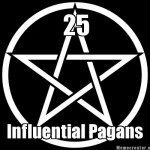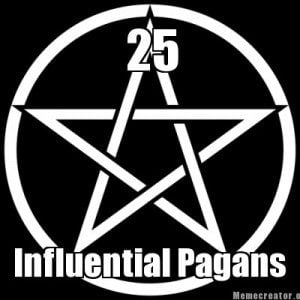 Who doesn’t love a good list and a short history lesson at the same time? Modern Paganism has been influenced by countless people over the past 200 years, but only twenty-five of them made my list. This installment looks at ten Europeans who made invaluable contributions to Modern Paganism. Part two of this series look at eleven Americans who also played a large role in Paganism’s rebirth. The third and final installment is a “Top 5” list and contains all the people you thought would be in this post.
Who doesn’t love a good list and a short history lesson at the same time? Modern Paganism has been influenced by countless people over the past 200 years, but only twenty-five of them made my list. This installment looks at ten Europeans who made invaluable contributions to Modern Paganism. Part two of this series look at eleven Americans who also played a large role in Paganism’s rebirth. The third and final installment is a “Top 5” list and contains all the people you thought would be in this post.
Only numbers five through one are listed in sequence, the other European and American pioneers are all listed by continent of origin and in alphabetical order. The very brief “Why they are on this list” part is not meant to be exhaustive, it’s just a brief thumbnail listing a few accomplishments and reasons for inclusion. Opinions are strictly my own, though you are certainly welcome to share some. This list has a very Wiccan slant, but since Wicca is the largest Pagan denomination that’s probably to be expected.
I desperately wanted to come up with a catchy title for this series, but was unable to. What you got was a descriptive title instead. Without the 25 people listed in this series I think Paganism would look radically different, or perhaps exist in a much more limited way. The people on my list were pioneers and paved the way for sites like this to exist today.
EUROPEAN WING
First Five Out (If only my list were longer!):
Patricia Crowther
Vivianne Crowley
Ronald Hutton
Theodor Russ/Carl Kellner (Founders of the O.T.O.)
Sybil Leek
(Please remember this is “Part One” and there are two more installments to come. The last of those installments is a “Top 5,” please remember that before thinking I missed someone.)
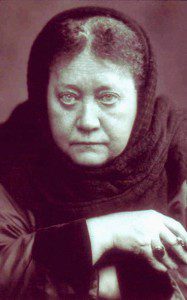 Who is she?: Helena Blavatsky (1831-1891), Russian mystic, founder of Theosophy, and author of Isis Unveiled and The Secret Doctrine.
Who is she?: Helena Blavatsky (1831-1891), Russian mystic, founder of Theosophy, and author of Isis Unveiled and The Secret Doctrine.
Why she’s on this list: Blavatsky is one of the most important occult figures of all time, and has been called “The Mother of the New Age” on more than one occasion. Blavtasky’s writings helped introduce the Western World to Eastern concepts and ideas. Reincarnation? Karma? Both were ideas injected into the Western occult milieu by Blavatsky. She was also an independent woman who travelled the world in the 19th Century and founded her own religious movement.
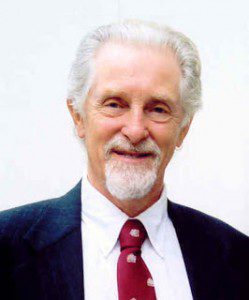 Who is he?: Raymond Buckland (1934-present), Witch, Spiritualist, Author
Who is he?: Raymond Buckland (1934-present), Witch, Spiritualist, Author
Why he’s on this list: Buckland’s fingerprints all over the Modern Craft. He brought Gardnarian Witchcraft to the United States back in the early 60’s. Ten years later he wrote the first complete how to Witchcraft book (The Tree: The Complete Book of Saxon Witchcraft), providing enough information so that anyone could practice the Craft regardless of circumstances. After The Tree Buckland continued to write, and has penned numerous fiction and non-fiction titles, with the most famous probably being Buckland’s Complete Book of Witchcraft (or as my friends and I used to call it Uncle Bucky’s Big Blue Book). He’s also a completely nice and approachable gentleman says the guy who was totally star-struck the moment he met Mr. Buckland.
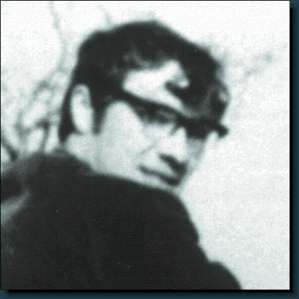 Who is he?: Robert Cochrane (1931-1966), English Witch, inspiration behind the 1734 tradition, and coiner of the term “Gardnarian.”
Who is he?: Robert Cochrane (1931-1966), English Witch, inspiration behind the 1734 tradition, and coiner of the term “Gardnarian.”
Why he’s on this list: Had Cochrane not committed suicide in 1966 it’s possible that Modern Paganism would be vastly different. Cochrane was one of the first English Witches to come forward with a system and cosmology different from that of Gerald Gardner (and his initiates). His rituals were unique and high energy, and when reading about them I get a sense of great joy. Cochrane also took his rituals outside and worked robed, taking Withcraft out of the parlor and back into nature. His correspondence with American Joe Wilson led to the establishment of the 1734 Tradition. Pick up Doreen Valiente’s The Rebirth of Witchcraft and you get the sense that she absolutely loved Cochrane’s rites, and her book Witchcraft: A Tradition Renewed (written with Evan John Jones) is a “how to” guide of Cochrane-style Craft.
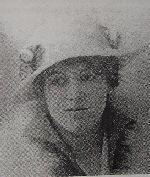 Dafo (Edith Woodford-Grimes 1887-1975), Gerald Gardner’s first High Priestess.
Dafo (Edith Woodford-Grimes 1887-1975), Gerald Gardner’s first High Priestess.
Why she’s on this list: Dafo was might have been the first Witch High Priestess, and was undoubtedly Gerald Gardner’s first High Priestess. It’s impossible to know just how influential Woodford-Grimes was to the Modern Craft, but she was certainly there at its beginnings in the late 1930’s. Dafo was one of the original members of Gardner’s Bricket Wood Coven, and was present at the initiation of Doreen Valiente in 1953. Dafo distanced herself from the Craft and Gardner in the late 50’s, wishing to remain anonymous and out of the public spotlight. Only in recent years has her vast contribution to Modern Paganism become widely known and acknowledged.
 Who are they?: Janet and Stewart Farrar (Stewart 1916-2000, Janet 1950-present), English Witches and writers, Alexandrian initiates.
Who are they?: Janet and Stewart Farrar (Stewart 1916-2000, Janet 1950-present), English Witches and writers, Alexandrian initiates.
Why they are on this list: For many involved in British Traditional Witchcraft their first exposure to those types of ritual came in the form of the Farrar’s A Witches’ Bible (originally published as two seperate books Eight Sabbats For Witches and The Witches’ Way). Later books such The Witches’ Goddess and The Witches’ God contained some of the first extended looks at the deities of Modern Pagan practice. Janet Farrar continues to have a strong influence on Modern Paganism, now writing and teaching with husband Gavin Bone. On a personal note words can’t convey just how influential the writings of Stewart and Janet have been on my own development. Their Witchcraft has always been how I’ve wanted my own Craft to look and feel.
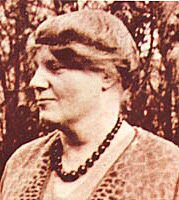 Who is she?: Dion Fortune (Violet Firth 1890-1946), founder of the Society of Inner Light and author of The Sea Priestess and Moon Magic.
Who is she?: Dion Fortune (Violet Firth 1890-1946), founder of the Society of Inner Light and author of The Sea Priestess and Moon Magic.
Why she’s on this list: Fortune is one of the most important occultists of the 20th Century, and a case could certainly be made for her to appear in my “Top 5.” Fortune’s magickal carrer began with a later incarnation of the Golden Dawn, and ended with her own Society of Inner Light. Of most interest to Pagans are her fiction works, specifically The Sea Priestess, The Goat Foot God, and Moon Magic. Her fiction provided a de facto template for Modern Pagan Ritual and remains highly influential (though probably more so in Great Britain than in the United States). She also wrote accessible works on the Kabbalah and psychic self defense. While Fortune would have probably never thought of herself as a Pagan, she certainly did have a relationship with many Pagan deities at various points in her life.
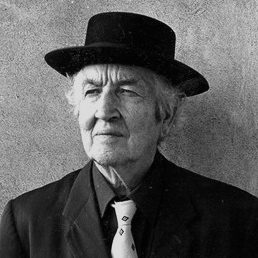 Who is he?: Robert Graves (1895-1985), author and poet, best known for The White Goddess.
Who is he?: Robert Graves (1895-1985), author and poet, best known for The White Goddess.
Why he’s on this list: Robert Graves created a modern mythology from the stories of our ancient past, and in the process introduced concepts that would become an important part of the Pagan world view. The “Maiden/Mother/Crone” archetype comes directly from the writings of Graves, as does the story of the Oak King and Holly King. Graves took ancient myth and gave it a fresh spin, providing it with a new resonance for the 20th Century. The only downside to Graves’ re-imagination is that much of what should be considered prose poetry is looked at as inarguable fact. While Graves is not always read directly by Modern Pagans his thoughts and ideas have been picked up and spread by a multitude of Pagan writers and teachers.
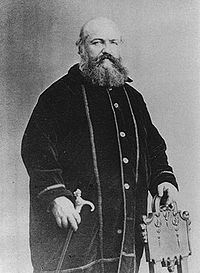 Eliphas Levi (1810-1875), French occultist, magician, and author.
Eliphas Levi (1810-1875), French occultist, magician, and author.
Why he’s on this list: It’s probably a bit of an over simplification to say that without Levi modern magic as we know it wouldn’t exit, but it’s close to the truth. Levi was a huge influence on The Golden Dawn, and on the American Albert Pike who rewrote the Masonic Scottish Rite. Levi wrote about magic like a scholar, attempting to define its practice and use. He also created some of the first occult correspondence tables. Anytime you match a tarot card to a letter of the Hebrew alphabet you are borrowing an idea from Levi. He also popularized the figure of Baphomet (for better or for worse) and wrote extensively on Lucifer as the light-bringer.
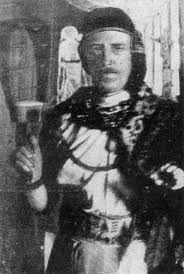 Who is he: Samuel Liddell MacGregor Mathers (1854-1918), writer and co-founder of The Hermetic Order of the Golden Dawn.
Who is he: Samuel Liddell MacGregor Mathers (1854-1918), writer and co-founder of The Hermetic Order of the Golden Dawn.
Why he’s on this list: Mathers was one of the driving forces behind The Golden Dawn (along with fellow co-founder William Wynn Westcott) and was responsible for much of the ritual and magical practice in that organization. In addition to his work with the Golden Dawn, Mathers translated many old magickal texts into English, making works such as The Lesser Key of Solomon and The Book of Abramelin more accessible to the majority of the English speaking world. His work as a translator resulted in increased popularity for magickal systems such as the Kabbalah and the Enochian language of John Dee. For the last ten years of his life Mathers lived in France where he promoted a religion dedicated to the goddess Isis.
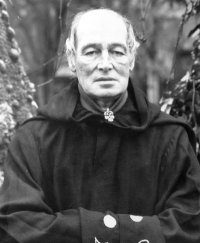 Who are they?: Alex and Maxine Sanders (Alex 1926-1988, Maxine 1949-present), founders of the Alexandrian tradition and two of the first well known public Witches.
Who are they?: Alex and Maxine Sanders (Alex 1926-1988, Maxine 1949-present), founders of the Alexandrian tradition and two of the first well known public Witches.
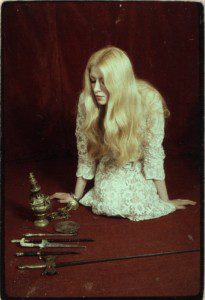 Why they are on this list: Love him or hate him, “Witch King” Alex Sanders was one of the most influential Witches who ever lived. While not a writer he founded the Alexandrian tradition, and served as a sort of unofficial spokesperson for Witchcraft in Britain during much of the late 1960’s and early 1970’s. Sanders appeared in numerous television documentaries and even released a record A Witch is Born, featuring a Wiccan initiation. While his title “King of the Witches” was self-proclaimed, he did initiate many important Witches, most notably Janet and Stewart Farrar. Since most of Alex’s major magickal work occurred while married to Maxine putting her on this list next to him feels necessary. Speaking of Maxine, she still travels and teaches today.
Why they are on this list: Love him or hate him, “Witch King” Alex Sanders was one of the most influential Witches who ever lived. While not a writer he founded the Alexandrian tradition, and served as a sort of unofficial spokesperson for Witchcraft in Britain during much of the late 1960’s and early 1970’s. Sanders appeared in numerous television documentaries and even released a record A Witch is Born, featuring a Wiccan initiation. While his title “King of the Witches” was self-proclaimed, he did initiate many important Witches, most notably Janet and Stewart Farrar. Since most of Alex’s major magickal work occurred while married to Maxine putting her on this list next to him feels necessary. Speaking of Maxine, she still travels and teaches today.
Next: “The American Wing“



